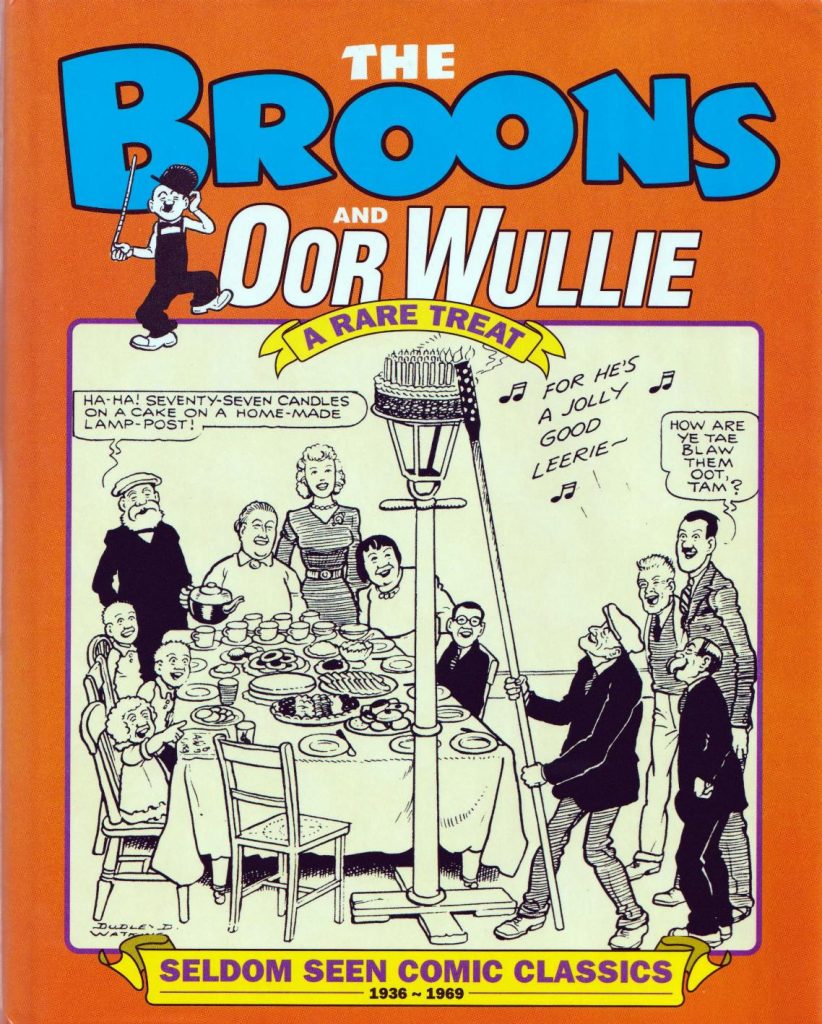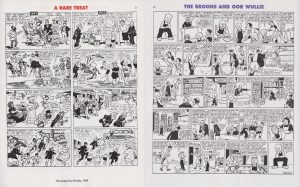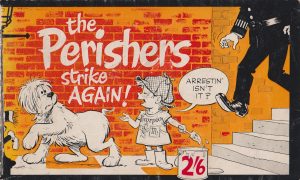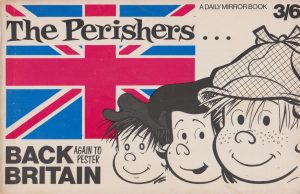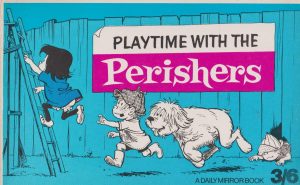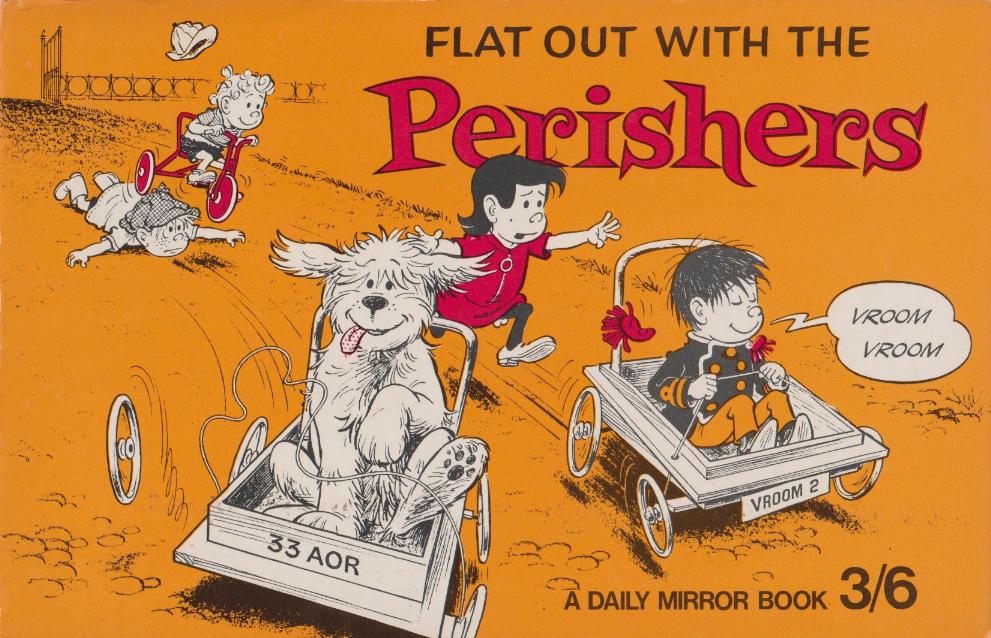Review by Frank Plowright
Both Oor Wullie and The Broons have been appearing in the Sunday Post weekly since March 8th 1936. From 1940 those strips have been gathered into books. Oor Wullie was the first, with The Broons issued the following year, and allowing for a short gap due to wartime paper rationing, that’s been the pattern ever since.
What differentiates A Rare Treat from the remaining hardcover selections of Scotland’s best loved Sunday newspaper strips is the content never having been previously reprinted, and strangely many of them feature Christmas or Hogmanay. Beyond the lack of paper during World War II, there’s no explanation as to why these strips were never gathered in the annual collections, yet allowing for a few years before the features really hit their stride, what’s here is no less accomplished than the material in other hardcovers. Almost half the collection, though, is pages from the first ten years between 1936 and 1946, rather than the usual jaunty skip through the years, and it shows a more gradual evolution, both in tone and the art of Dudley D. Watkins.
In the earliest strips Watkins is obviously imitating the busy style of American newspaper strips, more apparent when he attempts to cram all eleven members of the Broon family into a limited number of panels (sample art). There’s a looser, more animated style than the later strips, and a fussiness about the inking. The same applies to Oor Wullie, where the sheer number of panels per page is astonishing.
A Rare Treat opens with the second to fourth strips of both series from 1936. The concept of the Broons as a chaotic family is established from the very beginning, but Wullie gradually grew into a more loveable character. As written by R. D. Low, his first appearances start with him sitting on his familiar pail, but grumpy-faced and announcing he’s fed up. He then gets into mischief in largely wordless slapstick strips. Wullie gradually becomes a more sympathetic character, misfortune occurring rather than his deliberately stirring up trouble or chaos.
On the basis of these strips a decision seems to have been taken to avoid any mention of World War II hardships affecting Wullie, while the Broons endure them. Hen and Joe are absent on military service, soldiers are seen several times, and strips take place during night time blackouts. However, it’s due to the strip reflecting the life of the local people around Dundee, who were experiencing the same. As ever Low and Watkins are excellent at representing the natural life of the times. Cynicism and meanness is entirely absent, and there’s a strong moral code. Cheats never prosper, but just like in real life, there’s no guarantee hard work will pay off either.
It’s not an exact dividing line, but the post-war strips are generally better, perhaps when Watkins began signing the strips in 1946. The art’s more refined, and Low’s sitcom scripts have become more ingenious. It’s apparent from the earlier strips that he wasn’t above using the same situation again, but improving on the joke and the pacing.
As ever with a Broons and Oor Wullie collection, the local dialect is strong, but discovering new words is part of the fun, while the beautifully defined personalities alone make this a genuine treat.
